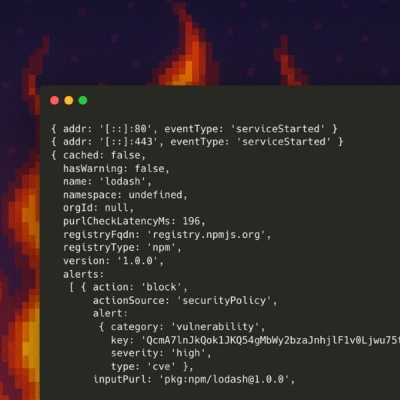scaffolder-backend-module-http-request
Welcome to the http actions for the scaffolder-backend.
This contains one action: http:backstage:request.
The http:backstage:request action allows the task to call any of the backstage APIs available to the user that triggers it. The action takes care of passing the authentication token of the user to the task execution so that the action can perform actions on behalf of the user that triggers it.
Getting started
Create your Backstage application using the Backstage CLI as described here:
https://backstage.io/docs/getting-started/create-an-app
Note: If you are using this plugin in a Backstage monorepo that contains the code for @backstage/plugin-scaffolder-backend, you need to modify your internal build processes to transpile files from the node_modules folder as well.
You need to configure the action in your backend:
From your Backstage root directory
cd packages/backend
yarn add @roadiehq/scaffolder-backend-module-http-request
Configure the action:
(you can check the docs to see all options):
const actions = [
createHttpBackstageAction({ discovery }),
...createBuiltinActions({
containerRunner,
integrations,
config,
catalogClient,
reader,
}),
];
return await createRouter({
containerRunner,
logger,
config,
database,
catalogClient,
reader,
actions,
});
New backend system
From your Backstage root directory
cd packages/backend
yarn add @roadiehq/scaffolder-backend-module-http-request
import { createBackend } from '@backstage/backend-defaults';
import { createBackendModule } from '@backstage/backend-plugin-api';
const backend = createBackend();
backend.add(import('@backstage/plugin-proxy-backend/alpha'));
backend.add(import('@backstage/plugin-scaffolder-backend/alpha'));
backend.add(import('@roadiehq/scaffolder-backend-module-http-request'));
backend.start();
Supported methods
Action supports following HTTP methods: GET, HEAD, OPTIONS, POST, UPDATE, DELETE, PUT, PATCH
The path should always point to a proxy entry with the following format: proxy/<proxy-path>/<external-api-path>
You can also point to the internal catalog apis like so: /catalog/entities See https://backstage.io/docs/features/software-catalog/software-catalog-api/#get-entities
i.e.: /proxy/snyk/org/<some-org>/projects or /proxy/circleci/api/projects (NB: the CircleCI proxy path is circleci/api/ but Snyk is just snyk/)
Example of using GET method
---
apiVersion: scaffolder.backstage.io/v1beta3
kind: Template
metadata:
name: HTTP-testing
title: Http testing for post/get
description: Testing get functionality with get
spec:
owner: roadie
type: service
parameters:
- title: Fill in some params
properties:
httpGetPath:
title: Get Path
type: string
description: The path you want to get on your backstage instance
ui:autofocus: true
ui:options:
rows: 5
steps:
- id: backstage_request
name: backstage request
action: http:backstage:request
input:
method: 'GET'
path: '/proxy/snyk/org/<some-org>/project/<some-project-id>/aggregated-issues'
headers:
test: 'hello'
foo: 'bar'
output:
getResponse: '{{ steps.backstage_request.output.body }}'
getCode: '{{ steps.backstage_request.output.code }}'
getHeaders: '{{ steps.backstage_request.output.headers }}'
Example of using POST method
If the request requires a body, it can be specified using the body parameter. There are two options here
content-type: application/json header is specified. Everything under body hash will be converted into JSON stringcontent-type: application/json header is not specified. body treated as a plain string
steps:
- id: backstage_request
name: backstage request
action: http:backstage:request
input:
method: 'POST'
path: '/proxy/snyk/org/<some-org>/project/<some-project-id>/aggregated-issues'
headers:
content-type: 'application/json'
body:
name: 'test'
bar: 'foo'
output:
getResponse: '{{ steps.backstage_request.output.body }}'
getCode: '{{ steps.backstage_request.output.code }}'
getHeaders: '{{ steps.backstage_request.output.headers }}'
Snippet above will send the following HTTP request:
-------- 127.0.0.1:53321 | POST /
Headers
"Accept" : ["*/*"]
"Content-Type" : ["application/json"]
"Connection" : ["close"]
"User-Agent" : ["node-fetch/1.0 (+https://github.com/bitinn/node-fetch)"]
"Content-Length" : ["27"]
00000000 7b 22 6e 61 6d 65 22 3a 22 74 65 73 74 22 2c 22 |{"name":"test","|
00000010 62 61 72 22 3a 22 66 6f 6f 22 7d |bar":"foo"}|
You can also visit the /create/actions route in your Backstage application to find out more about the parameters this action accepts when it's installed to configure how you like.
Roadie gives you a hassle-free, fully customisable SaaS Backstage. Find out more here: https://roadie.io.



